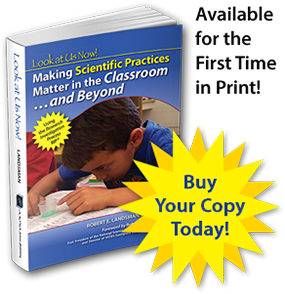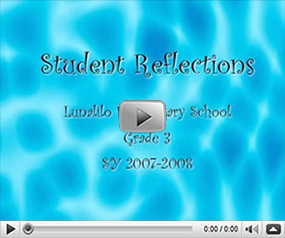RIP® model Uniqueness & Philosophy
No other science education model parallels the approach of the Research Investigation Process (RIP®) and few, if any, possess the type and extent of evidence showing the impact that this program exerts on teachers and students at all levels. This model uses scientific inquiry as a critical thinking process that applies to all learning, not just science education. The structure of the RIP® program is one-hundred percent research-based as are the data that indicate its dramatic impact on measurable aspects of teaching, learning, and decision making.
Many science and non-science education programs are developmentally-geared and spiral by introducing the same topic such as a certain type of animal or a concept over and over at different grade levels focusing on different aspects of these items. The RIP® is developmentally-geared by focusing on and spiraling the components of critical thinking used in scientific inquiry, but with deeper meaning and understanding as grade levels progress. From Grade K, students begin to use this inquiry process in its entirety. The thinking involved in all aspects of this process deepens through progressive grade levels as does the complexity, fullness, and openness of the inquiry in which students engage and through which they learn the content required by each standard that is to be addressed.
Many existing programs that purport to use an “inquiry-based” approach involve the use of textbooks and “kits” containing supplies used in lab-like activities through which one or more components of scientific inquiry may be stressed when answering a supplied question. These programs were constructed so that teachers can follow a prescribed content and teach it in a prescribed way. For some of these programs, only if they complete this task are they permitted to do extended activities with more flexibility. The teacher may or may not have the opportunity to gradually relinquish some control over leading the student through inquiry. In contrast, the RIP® program does not have a textbook or “labs,” nor does it have pre-set activities. The teacher initially serves as guide to lead the student through all fazes of scientific inquiry, modeling and demonstrating the thinking and behavior skills necessary to conduct a scientific investigation. These are the same thinking and behaviors used by scientists to learn about the natural world. Soon the teacher serves as co-investigator, coaching the student through the student-initiated inquiry. As early as possible, the teacher relinquishes control over the content of the research investigation. The key is to transfer ownership of learning over to the student as soon as possible. Because the RIP® is not accompanied by nor relies on a textbook, it is extremely cost effective over both the short- and long-term compared to other education programs.
The RIP® is based on student interest. Scientists become almost addicted to the excitement of searching for truth regarding the natural world. Much of this excitement is tied to the thinking and behavior skills that provide the tool(s) to empower them to successfully test potential answers (hypotheses) to their research questions. In other words, it is rewarding to be able to apply a process that allows one to answer her or his own questions. In the same way, thinking and behavior that characterize science can be used to motivate students to learn. Thus, the “curriculum” for learning is literally constructed by the student, with the teacher serving as the facilitator and coordinator for aligning benchmark and other relevant content to the experience. The RIP® aligns very closely with the National Science Education Standards’ “More Emphasis Conditions,” providing a foundation for school and systemic change that supports the type of learning that research indicates is necessary for success in the 21st century and is expected by the Next Generation Science Standards (NGSS).
This program capitalizes on the use of mathematics in the decision making process used to test hypotheses. It hones in on the development of decision making skills that are dependent on the learner’s understanding of how mathematics is involved in hypothesis testing, as opposed to simply using mathematics to collect data. To this end, mathematics plays a key role in learning at all levels and students are encouraged to build the necessary skills in mathematics to complete their investigations. In this program, students as young as kindergartners begin to recognize the concept of uncertainty in their decision making and how mathematics can be applied to help make the “best” decisions.
The RIP® impact on K-12 students has been extensively studied over the past 17 years and evaluated by a number of independent sources. Not only does this model for education impact test scores, but it also has a dramatic consequence on how students develop as members of society. Published ten-year follow-up data from graduating high school students indicates that these students, through the skills they had developed using the RIP®, were fully prepared to meet the challenges faced in the 21st century regardless of career choice. This program also results in children enjoying science and encourages students to seek careers in science. Regardless of whether the students are Special Education or Gifted and Talented, the impact of this program is the same. This program has been heralded as an exemplary program in science education by the National Science Teachers Association.
Your Shopping Cart
Ordering five (5) or more copies? Contact us for a special volume discount.
Read the Foreword
Enter your name and e-mail address below for immediate access to read the complete Foreword, written by Dr. Robert E. Yager, in its entirety.


 ANOVA Science
ANOVA Science